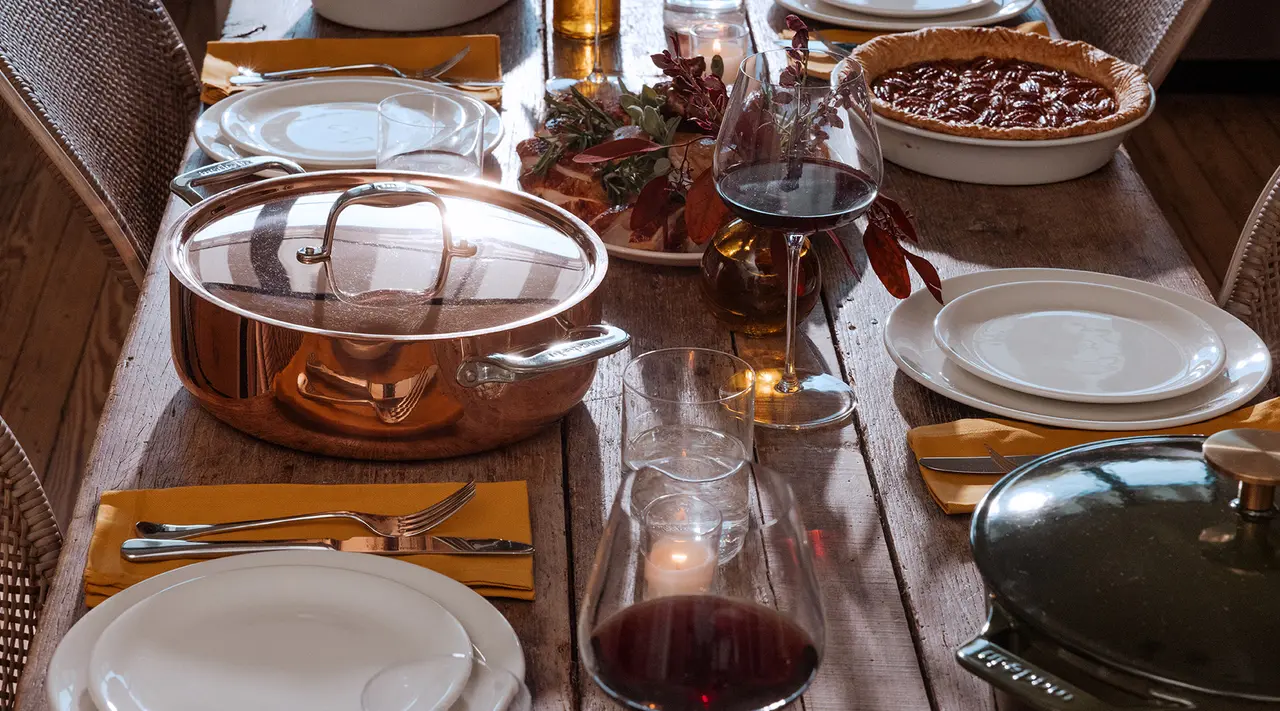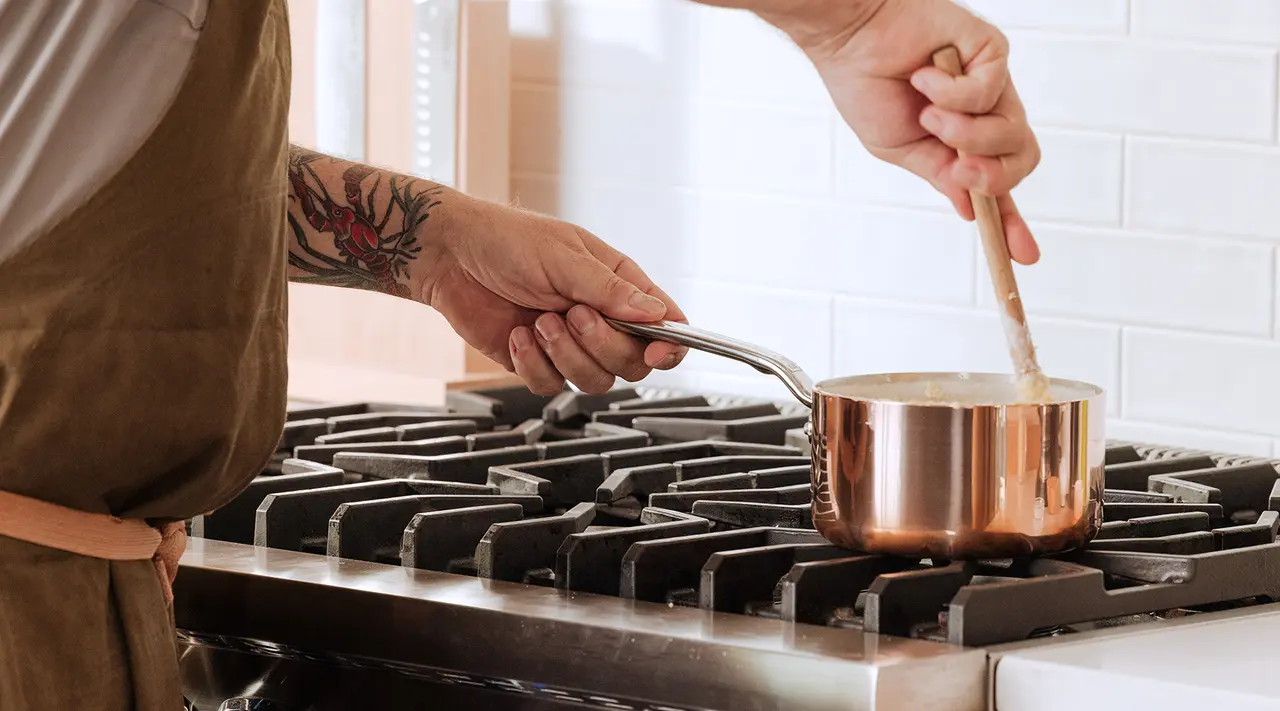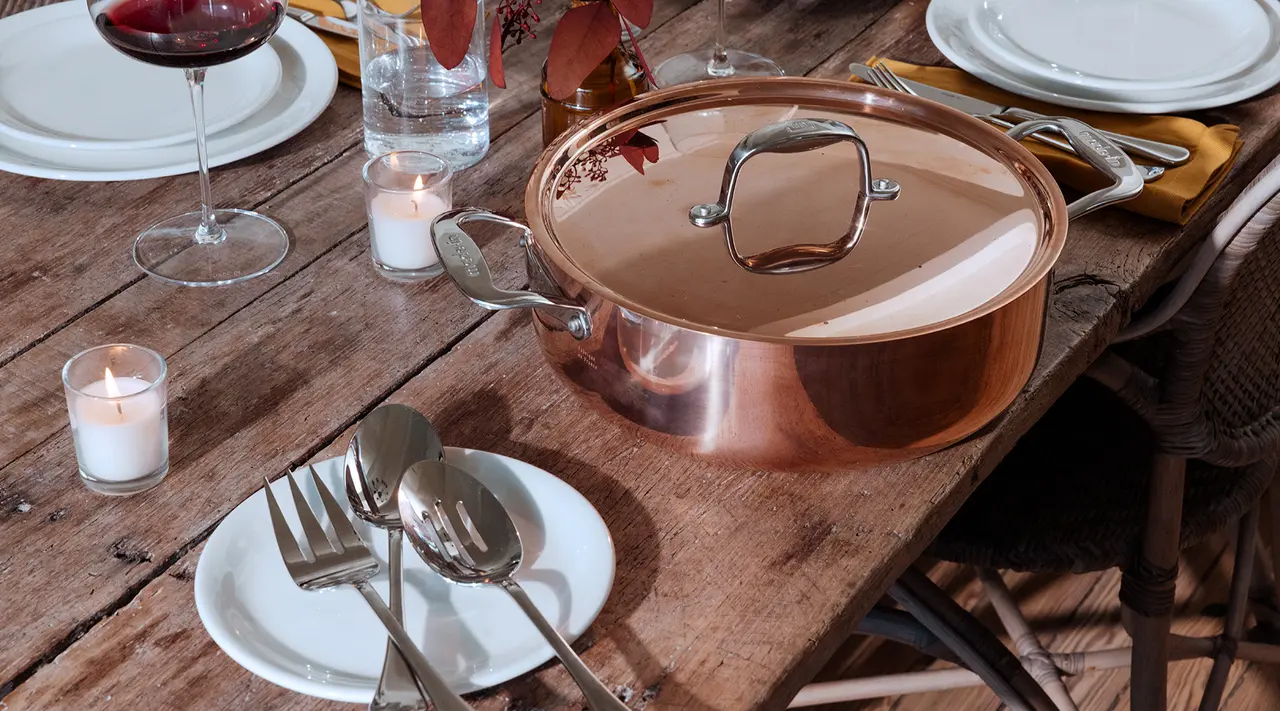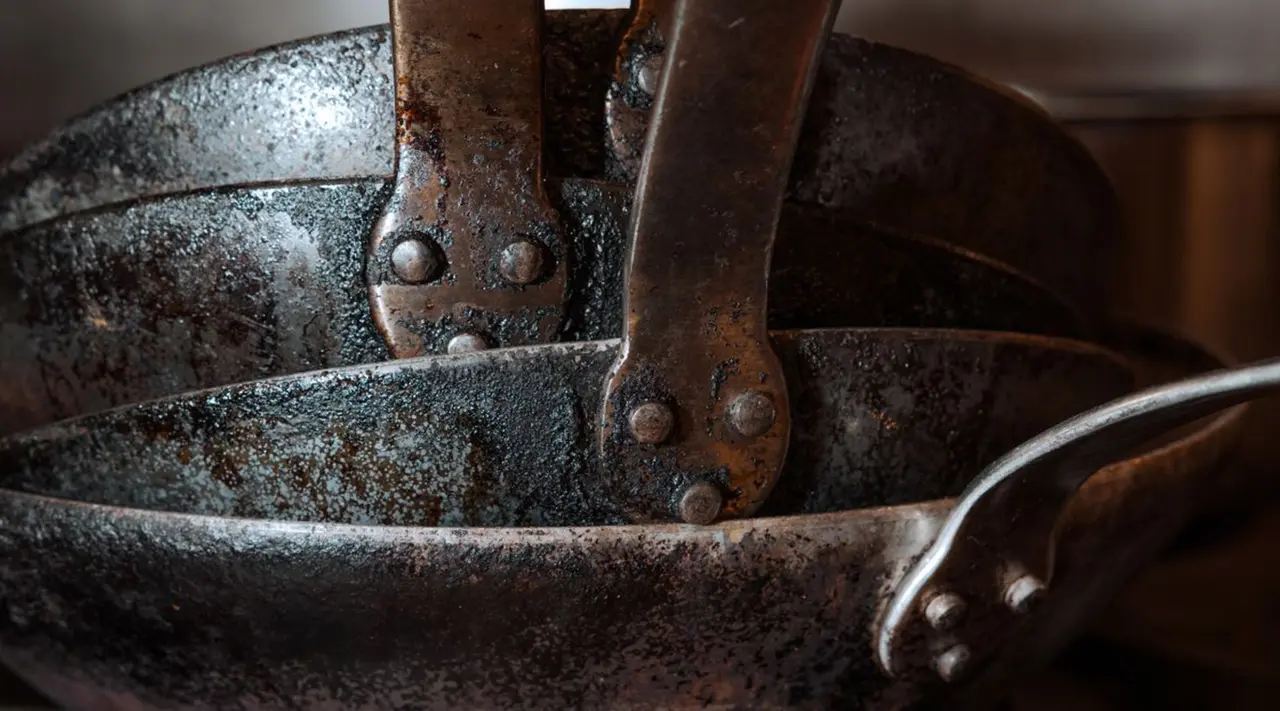Besides serving as a beautiful addition to any kitchen, many cooks invest in copper cookware for its superior heat conductivity and even heating surface. Once you’ve finished the actual cooking, however, copper cookware needs to be cared for like the investment that it is.
Our team put together a guide to caring for the highly reactive metal, with additional tips that will keep your copper cookware in top form for years (and meals) to come.
How to Polish Copper Cookware
Because copper is a reactive metal, its appearance will immediately begin to change from the first use, eventually evolving to dark brown and then to green (like an aged penny)—this is called a patina. Routine polishing will maintain a shinier finish if that’s your preference, but we love the unique beauty and low maintenance of a hard-earned patina.
But if a shiny exterior is more your speed, it’s recommended that you give your cookware a thorough polish every six months. While specialty cleaning products can be purchased online or at any cooking store, copper can be polished with items already in your kitchen, like lemon juice and table salt.
Step 1: Gather Materials
Set up a workstation in your kitchen. You’ll need an acid (fresh lemon juice or white distilled vinegar), salt (table or kosher), and a sponge.
Step 2: Create an Abrasive Paste
To polish, make a paste of equal parts of your acid of choice and salt.
Step 3: Polish
Using the sponge, rub the paste into the copper surface and buff until shiny.
Step 4: Rinse and Pat Dry
Once the piece has been polished, immediately rinse with warm water to remove any remnants of the paste. Dry completely.
When to Polish Copper Cookware
It’s worth bearing in mind that tarnishing is a natural reaction that occurs between metals and elements like water and air. And copper cookware doesn’t strictly need to be polished—in fact, some cooks eagerly await the lived-in feel of a well-loved copper pan.
For those who prefer a like-new appearance, polishing copper cookware every six months is usually an appropriate routine. That said, if you notice a buildup of tarnish in the interim, there’s no issue with polishing your cookware more frequently, like every three months.
When to Get Copper Cookware Restored

While high quality copper cookware is built to last, extra TLC may be required eventually—typically in the form of getting the interior refurbished, or "retinned" once it's worn out. Since our Copper Collection is finished with a stainless steel interior and not tin or aluminum, you can put it to work without worrying that you’ll need to get it refinished in the future.
Additional Copper Care Tips

If you’re new to using and caring for copper cookware, maintaining copper’s shine might seem like an overwhelming task—but it doesn't have to be when you keep the following tips in mind.
Store Correctly
To achieve the longevity that copper cookware was built for, it’s essential that it’s stored correctly. As oxidation occurs as a reaction between copper and elements such as water, often encountered through ambient humidity, be sure to store your cookware in a cool, dry space.
Know What Can’t be Cooked
While there are many benefits to copper cookware, one downside is that copper ions react negatively to acids. Thus, it’s important that you avoid using pure copper cookware when cooking with ingredients such as lemon, tomatoes, and wine.
Modern iterations of copper cookware, including ours, is lined with a high-performance Stainless Clad interior, so is safe to use with any and all ingredients. This is only something to keep in mind with pans that are copper on the interior and exterior.
Use the Correct Utensils
Part of copper’s allure is that it’s a soft, highly reactive metal with unparalleled even heat conduction. The downside of using a soft metal is that it can easily be scratched by other metals commonly used in the kitchen.
To avoid unnecessary scratches on the copper bottom or stainless interiors of your coveted Made In Copper Cookware, we advise being gentle with utensils (ie, no sawing or scraping with sharp-edged tools) or sticking with softer materials like wood or silicone.
Ready to Shop?
To properly care for your copper cookware, polish as needed and store in a cool, dry area. Our Copper Cookware Collection is 90% copper, 10% Stainless Clad—perfectly calibrated for searing, sautéing, and braising.































